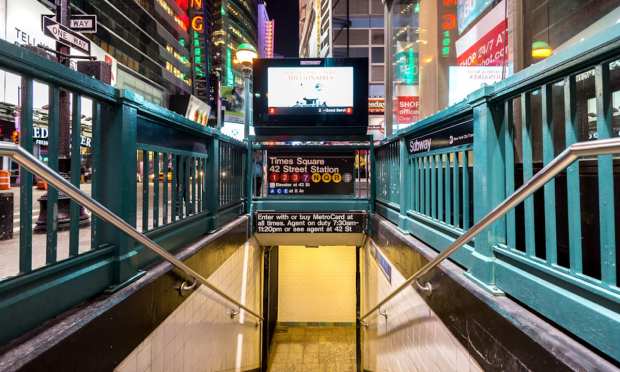New York City Joins Contactless Transit Trend

The largest bus and subway system in the U.S. is starting the new year with technology designed to speed up the collection of fares while reducing the amount of touching needed to get on board.
In announcing the completion of the 18-month installation project of OMNY tap-to-pay scanners on 5,800 city buses and 472 subway stations, New York’s Metropolitan Transportation Authority (MTA) joined a growing list of locations around the country and the world that are now turning to cashless – and contactless – collection.
The move marks the first fare collection upgrade in nearly 30 years for the MTA, which has relied on plastic magnetic strip Metrocards since the early ’90s. As the notoriously finicky Metrocards are phased out over the next two years, public transport riders citywide can now enjoy a faster, smoother boarding experience at every location.
“Many aspects of our lives have become more difficult this year, but OMNY makes at least one process easier, faster and safer than ever for New Yorkers,” said Sarah Meyer, New York City Transit’s chief customer officer. “I’m thrilled that subway and bus riders everywhere now have a chance to experience the simplicity of a tap-and-go technology that allows people to spend less time waiting at MetroCard vending machines and more time at home with their families.”
A Little Help from My Friends
To complete the project on schedule, the MTA’s OMNY rollout team relied heavily on the payments expertise of American Express, Mastercard and Visa. For example, Dan Sanford, Visa’s global head of contactless payments, said the transition to OMNY will be simplified by the fact that more than 70 percent of Visa cards in New York are already enabled for contactless transactions, up from 5 percent in 2019 when the MTA rollout began.
At the same time, said Curtis Wilson, vice president and general manager of U.S. merchant services at American Express, whether it’s the MTA or other retail businesses, tap to pay is fast becoming the preferred way to pay.
“This rollout, coupled with contactless offerings from merchants all around the city, is helping New Yorkers become more familiar with contactless as a fast, safe and easy way to pay,” Wilson said.
New York, Vegas, Moscow and More
Although the Big Apple is a huge addition to the touchless transport payment movement, it is hardly the first to go this route. Just last week alone, the city of Las Vegas announced its own system upgrade to facilitate payments without phones or credit cards.
“Passengers in Las Vegas will now be able to top up their ticketing accounts in shops around the city using cash, which they can then use to buy contactless fare (cards),” the Regional Transportation Commission (RTC) of Southern Nevada said last week.
In the Russian capital, riders on the Moscow Metro System can now buy tickets from Google Pay without having to unlock their smartphones. The so-called “super-fast” seamless payment option is currently supported by Mastercard and Google Pay, and will soon be available for other cards.
“The new service by Google is extremely trending during pandemic: You do not have to take off your gloves or mask to enter the passcode or Face ID on your smartphone – just turn on the screen and this will be enough,” said Maksim Liksutov, Moscow’s deputy mayor for transport.
In July, Visa announced that more than 500 cities around the world had sought its tap-to-pay solutions, as the company and its partner Cubic were advancing the future of fare payments. However, as much as tap-to-pay tech is spreading throughout the transportation sector, converting to a quicker payment system isn’t cheap. In the case of the MTA, the change-over project cost over $730 million so far. But even before the OMNY project was fully complete, the MTA said that over 35 million people had already used the system.
